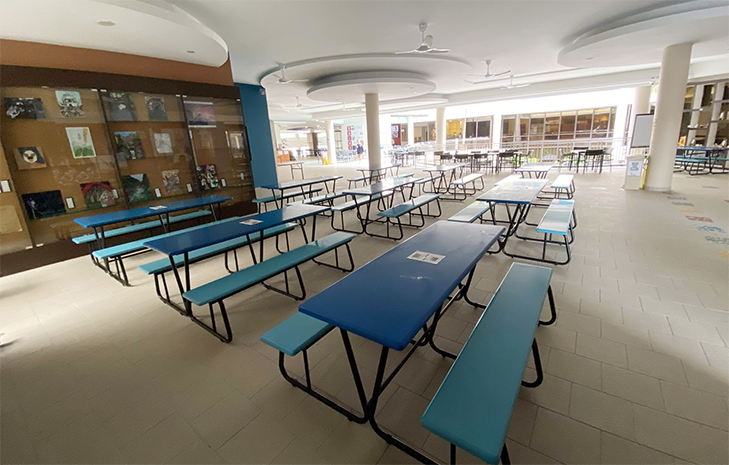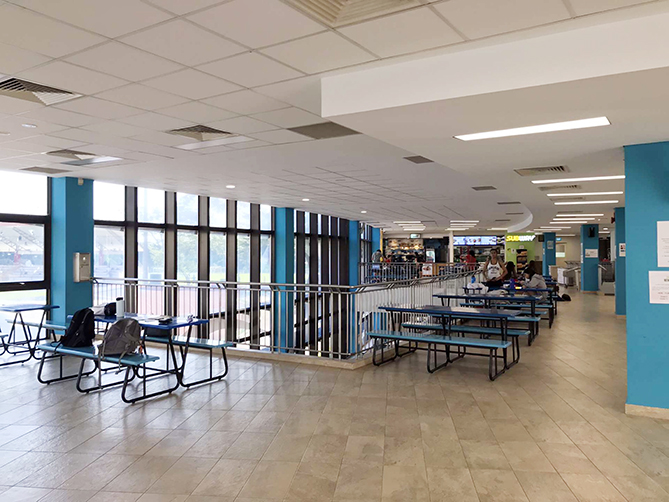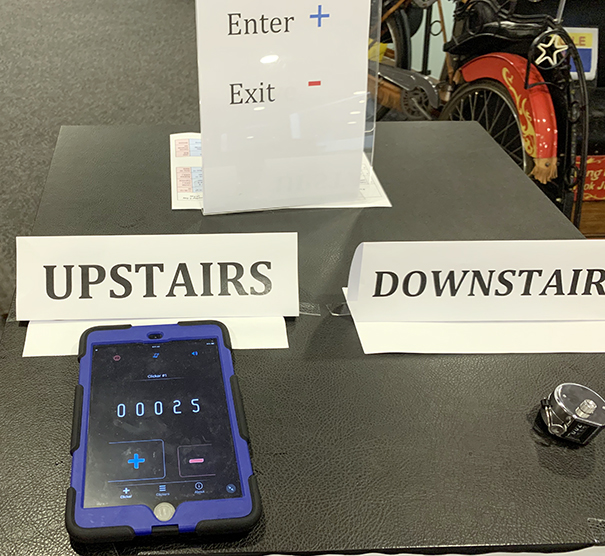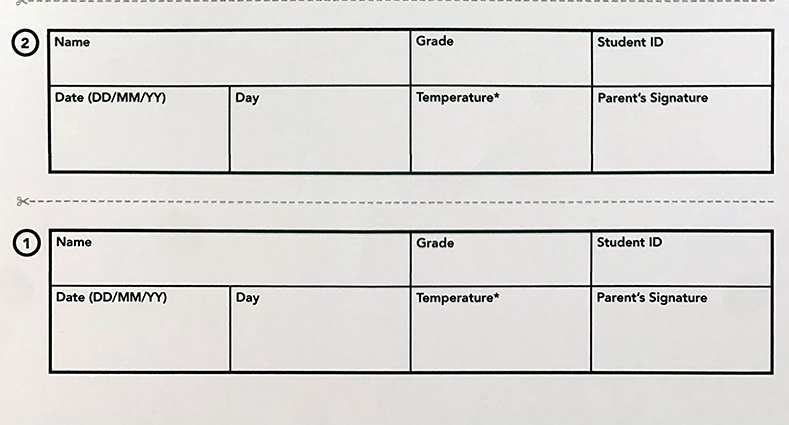With COVID-19 rapidly spreading worldwide, it’s inevitable that schools will have to change their learning environments to reduce the risk of infection. Schools in countries such as Korea and the United States have already fully adopted online learning through apps such as Zoom. Schools in Singapore on the other hand, such as SAS (Singapore American School), have only begun using online learning on a temporary basis, and plan to welcome students by the end of May. To continue educating students safely, SAS has made adjustments according to the rules and restrictions imposed by the Ministry of Health (MOH), which requested that schools take additional measures, including suspending mass gatherings and conducting regular health checks (read more at https://www.moe.gov.sg/news/press-releases/additional-precautionary-measures-against-the-2019-novel-coronavirus-infection).
To avoid overcrowding in the cafeteria, SAS’s facilities team set up additional locations on campus. In addition, the school instructed that juniors eat on the second floor of the cafeteria, while sophomores eat on the first floor. This also applies to seniors and freshmen at a different scheduled lunchtime. Normally, the cafeteria has more than 25 tables on each floor, but most have been moved to areas such as the high school foyer, courtyard, and outside the library. In addition to changing seating plans, SAS also permits no more than six students to sit at one table.


While the cafeteria is where most students spend their time, the library is also a widely used area. Even during the breaks between classes, students crowd into both the downstairs and upstairs sections of the library. To restrict large gatherings in enclosed areas, the facilities team set up a system by the library entrance where students are obligated to tap a plus or minus sign on an iPad, to indicate whether they are entering or exiting the library. This system was set up separately in the upstairs and downstairs sections, which makes it easier for the librarians to minimize the number of students in the library when the number on the iPad exceeds a certain number.

The school can make strict regulations, but it is primarily a student’s responsibility to check and maintain their health before attending school. To keep everyone safe, SAS made it mandatory for students and their parents to fill out a temperature-screening slip every morning. If a student’s temperature exceeds 37.5 degrees in the morning, he/she cannot go to school. To prevent sick students attending class just to maintain their attendance record, SAS chose to exempt all absences related to COVID-19 from the gradebook. Additionally, students who go to school with even slight flu symptoms or have possibly been exposed to the coronavirus are monitored regularly throughout the day by the school’s nurses and healthcare team.

The COVID-19 outbreak is causing paranoia and fear among people worldwide. Many businesses and public service centers have stopped operating and fewer people are going out. The impact of COVID-19 on students, however, is even more detrimental. AP examinations are changing, SATs are being cancelled, and, most importantly, schools have shut down. It is important to know that, amidst these issues, there are ways to fight this virus, like how SAS is planning to stay in operation through the imposition of more regulations. Although it seems almost impossible for schools to operate in countries where the virus is more destructive, harsh restrictions and regulations could increase the chances of schools reopening. Meanwhile, what we students should do is stay healthy and stay positive about our online learning, no matter how unsatisfactory it may be.

YoonSeo Kim
Grade 11
Singapore American School

